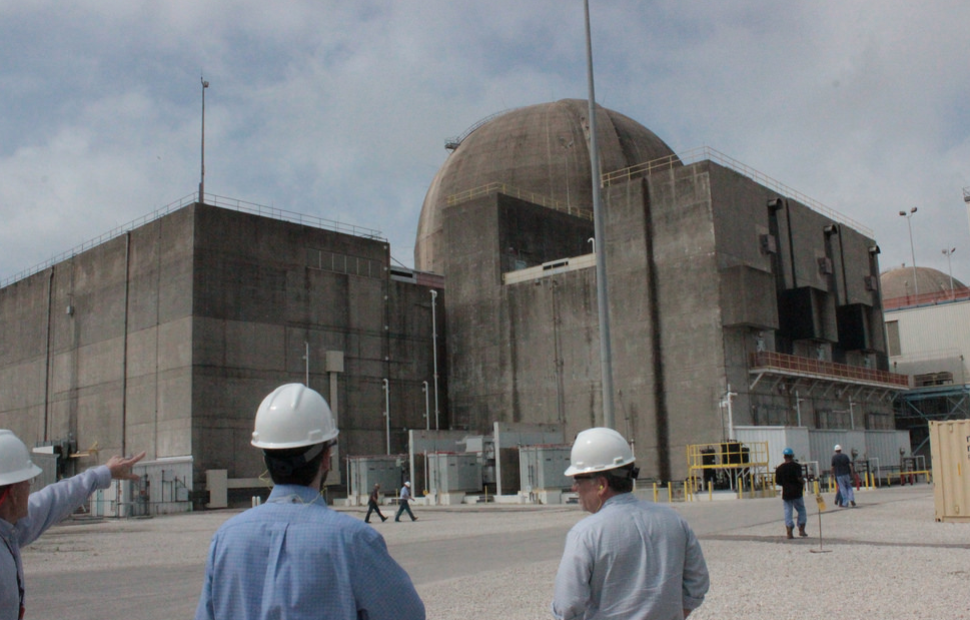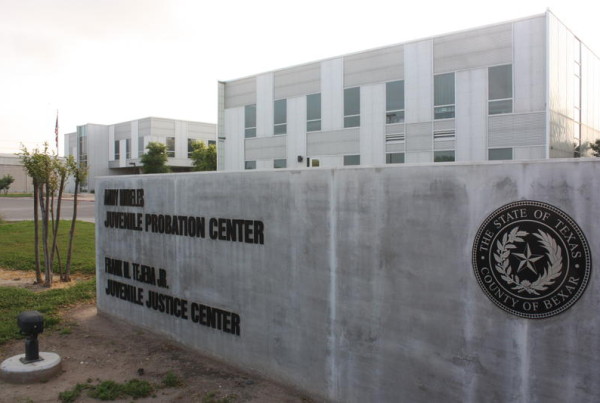This story originally appeared on Houston Public Media.
The plant’s two domes rise 18 stories above the coastal plains of Matagorda County 90 miles southwest of Houston. The site is surrounded by coils of concertina wire and patrolled by heavily armed guards.
The domes are steel-reinforced concrete walls are four feet thick.
“Ready? All right,” says Jim Von Suskil, our tour guide.
If you are ever invited inside — as the tour group was — you’ll find even more security when you try to leave. They want to make sure you haven’t become … radioactive.
“This is the operating unit, unit one,” Suskil says.
We are now inside the South Texas Project, a nuclear power plant. Its two reactors began producing electricity in 1988.
“So we’re now entering the actual reactor area, lots of signs around, like this one that says caution, contaminated area,” Suskil says.
Our tour guide warns us not to go near them. He’s Jim Von Suskil, with NRG, the energy company that owns the plant along with the utility companies from Austin and San Antonio.
“Two doors, open one at a time,” Suskil says.
The noise from the giant turbine and other equipment is deafening, so it’s a relief to exit reactor number one and head for reactor number two which is temporarily shut down.
Workers are refueling it with radioactive uranium and doing millions of dollars in maintenance and upgrades.
We enter a small room marked “command center.” Inside, a team of managers is watching a wall of wide screen video monitors.
They’re showing a live feed from inside the shutdown reactor. Three workers can be seen wearing clear plastic suits with hoods, face shields, and oxygen packs that supply air.
“You can see the fellow down there who looks like he’s sucking up stuff with a wet and dry vac? That’s a radiation monitor,” Suskill says.
“They are monitoring for radiation in an area,” Suskill continues. “They’re just preparing it to make sure it’s not contaminated.”
The plant brags that it’s one of the safest places to work and has been nationally recognized.
But nuclear power has always carried with it a certain scariness, because things have gone wrong elsewhere. Like the plants in Pennsylvania’s Three Mile Island in 1979, the Soviet Union’s Chernobyl in 1986 and Japan’s Fukushima in 2011.
Back on the tour, we’re now in the main control room where the technology is from the 80’s with analog lights and dials and meters.
“In the event something happens where a signal is generated that the control system doesn’t like it,” says Suskill, “the control rods drop, and the reactor shuts down in half a second.”
But beyond safety and environmental concerns, nuclear power is also facing challenges from other sources of power in Texas. Natural gas is now providing nearly half the fuel to make the state’s electricity, wind and solar almost ten percent and growing.
Nuclear is at about 9 percent.
“I believe there absolutely is a future for it,” says Gerald Powell, the South Texas Project’s vice president. “I think any portfolio for a state needs to have a good mix of wind, solar, nuclear, and coal.”
“Nuclear power will play a long term role in our energy mix,” Buddy Eller, the site’s spokesperson.
In fact, the site has federal permission to build two more reactors.
But NRG pulled its funding following the Fukushima disaster and the expansion is on hold.
Our tour came to a close as we first passed an old-fashioned hand-held Geiger counter that workers use to check their tools for contamination.
We then pass through a far more sophisticated radiation sensor that was like the body scans in airports.
The machines pronounced us clean and we were cleared to leave.













